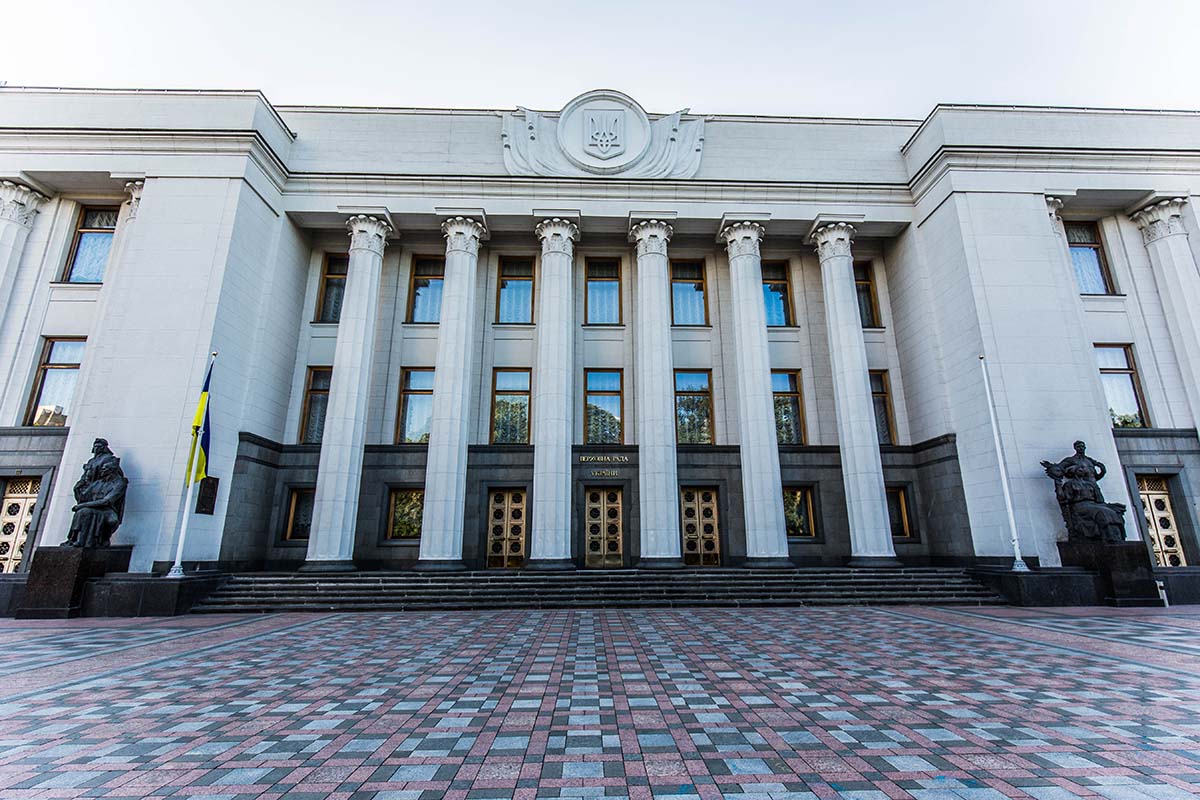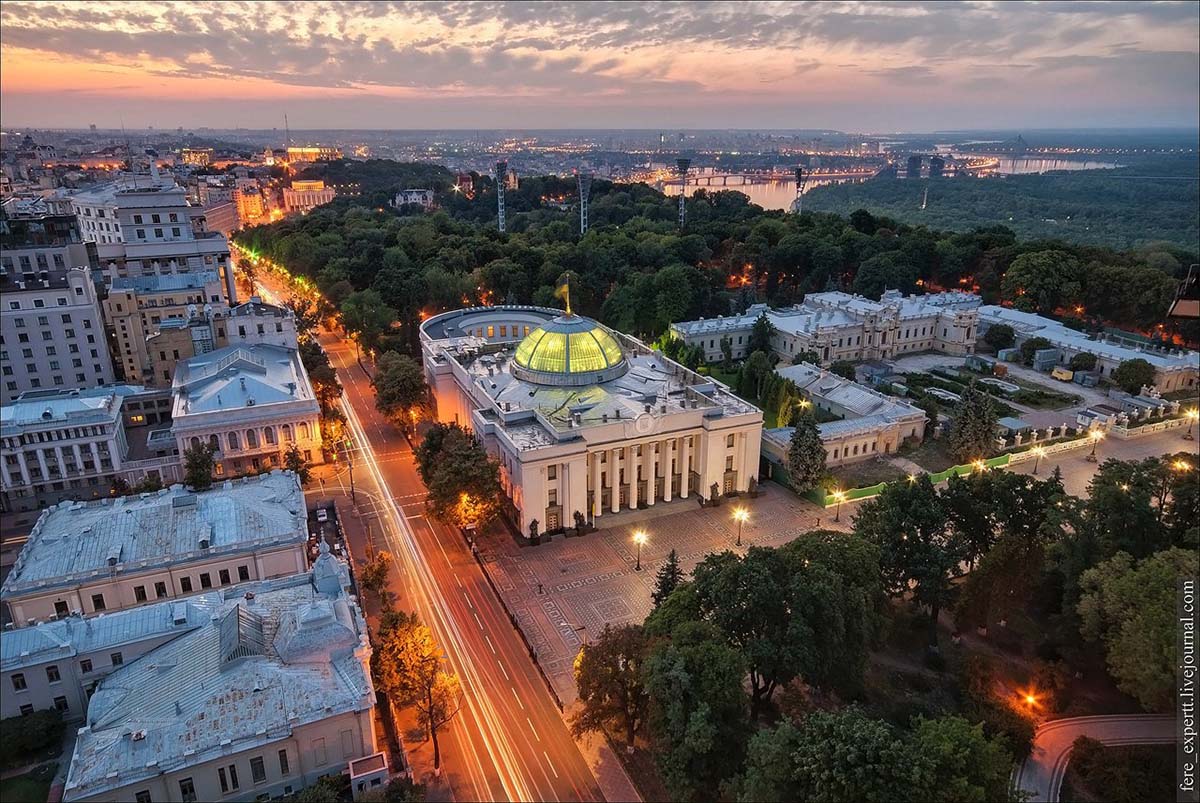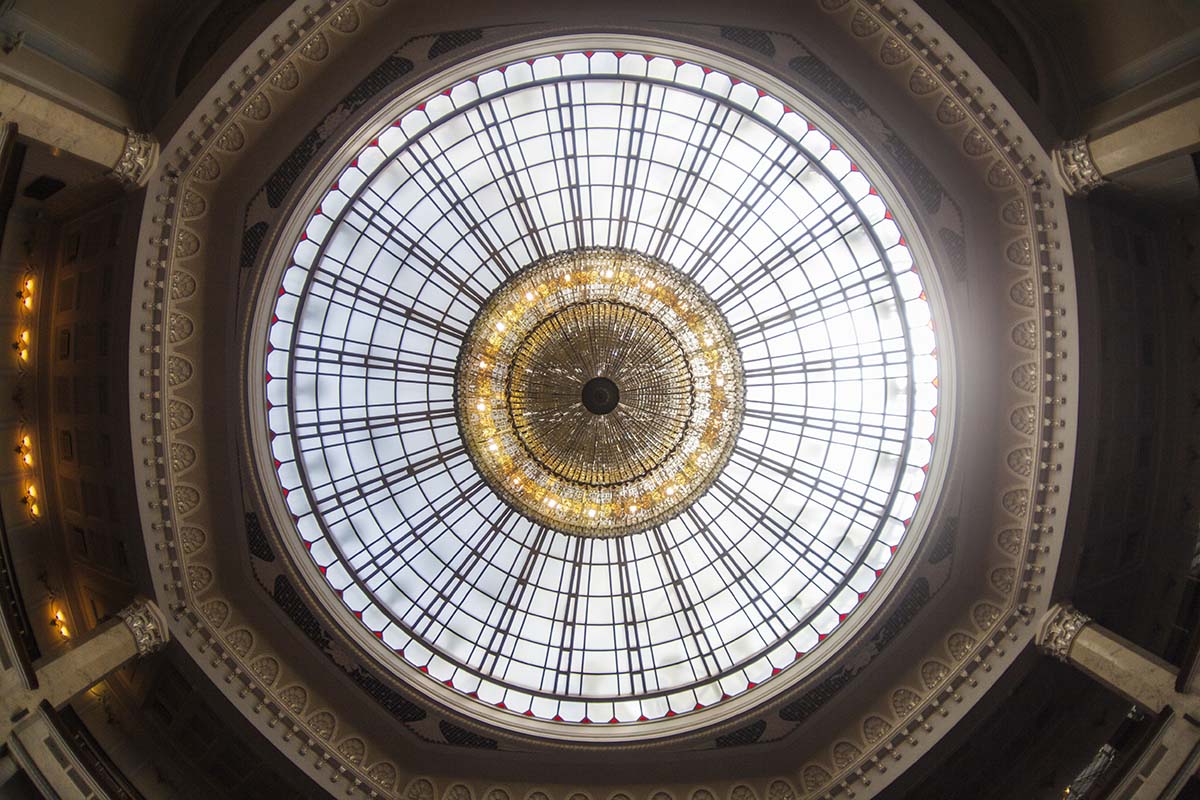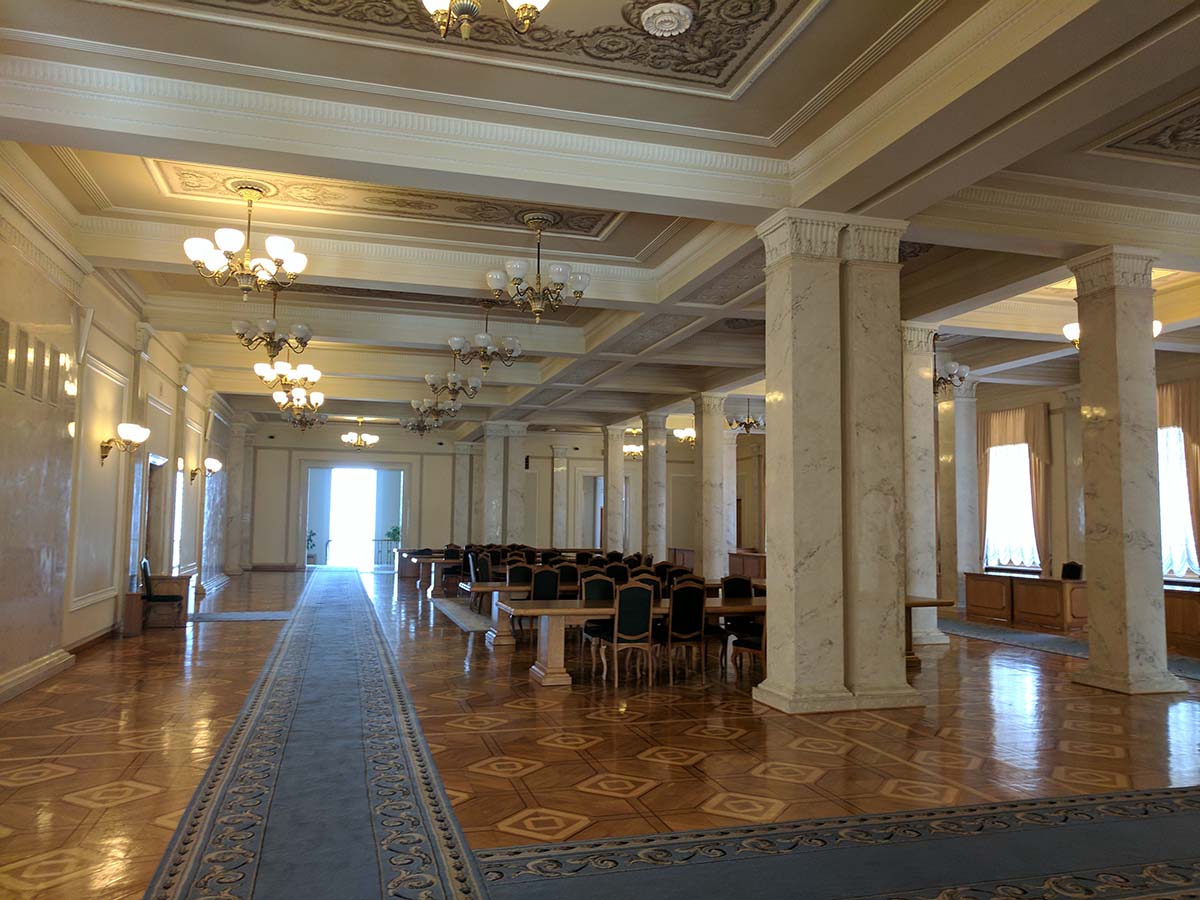At the beginning of 1934, after the capital of the Ukrainian SSR was moved from Kharkov to Kyiv, a master plan for the construction and reconstruction of the city was developed and approved. As part of this project, in February 1936, a competition was announced for the best design of the building of the All-Ukrainian Central Executive Committee, to which famous architects Valerian Rykov, Vladimir Zabolotny, Sergei Grigoriev (administration of the President of Ukraine) and Yakov Steinberg were involved. The commission chose the project of Vladimir Zabolotny, which was completed in 3 years and in 1939 the building was solemnly presented to the highest party officials. It was built between two parks: Gorodsky and Mariinsky. Behind the Supreme Council is Mariinsky Palace, and across the road – Galperin’s mansion (now a committee of the Supreme Council) with which it is connected by an underground passage. Zabolotny was awarded the Stalin Prize for his work in 1940 and appointed chief architect of Kyiv.
The architecture of the building embodies the classical techniques and forms inherent in that time. The light color and consonance with the natural landscape make it a truly Kyiv building. The building of the Supreme Council is an example of Ukrainian architectural classics. Designed in a strict rectangular-symmetrical shape, low – only 3 floors. It is crowned with a dome made of metal and glass. A glass dome with a lighting shade provides the room with natural light. The diameter of the lampshade is about 16 meters. At its center is a crystal chandelier shaped like a sunflower, a motif often used in Ukrainian folk art. Based on national motifs, colored glass was introduced into the hall’s lighting ceiling. The flat roof of a modern building gives it compositional harmony.
During the Great Patriotic War, the building suffered significant damage. During the reconstruction process in 1948-1952, according to the design of Vladimir Zabolotny, a three-story northwestern part for office space was added to the main building, which had a semicircular closed plan with an inner courtyard. During the restoration work in 1985, which was carried out under the leadership of Natalia Chmutina (furniture house), 4 sculptural sculptures were installed in front of the projections of the central entrance group, which was provided for by Zabolotny’s project. These sculptures represent various segments of the Ukrainian population: workers, peasants, scientists, and intelligentsia.
Externally, the structure is designed in light colors thanks to the use of light terrazite plaster and light gray Turchin granite. Contrasting with these tones is the dark tone of the base, made of polished labradorite and has a significant protrusion relative to the plane of the walls. All rooms of the three-story building are designed in a single compact volume. The facades are symmetrical and have a single order, which received a more voluminous interpretation in the colonnade of the main facade (fourth column), as well as on the main planes of the side facades (three-quarter columns). The harmony of architectural forms is also felt in the interior design. High-quality plaster, various types of natural and artificial marble, valuable types of wood, nickel-plated metal, copper, bronze, inlay, high-quality colored glass, wood and plaster carvings, mosaic, color scheme – this is the palette that the author used in the design with great artistic taste interior spaces. Everything, including door handles, is made according to original designs, ensuring unity of style in interior design. Chandeliers and furniture were made according to special sketches and projects, and lampshades were painted.
On February 25, 2014, a bronze five-pointed star framed by a crown of ears was dismantled from the spire of the Verkhovna Rada building. Deputies considered it inappropriate to have a Soviet symbol on the parliament building of independent Ukraine. On October 29, 2015, the central figure of the country’s coat of arms was installed on the spire – the golden trident of the Grand Duke of Kyiv Vladimir.
Where is the building of the Supreme Council of Ukraine?
Mikhail Grushevsky Street, 5




